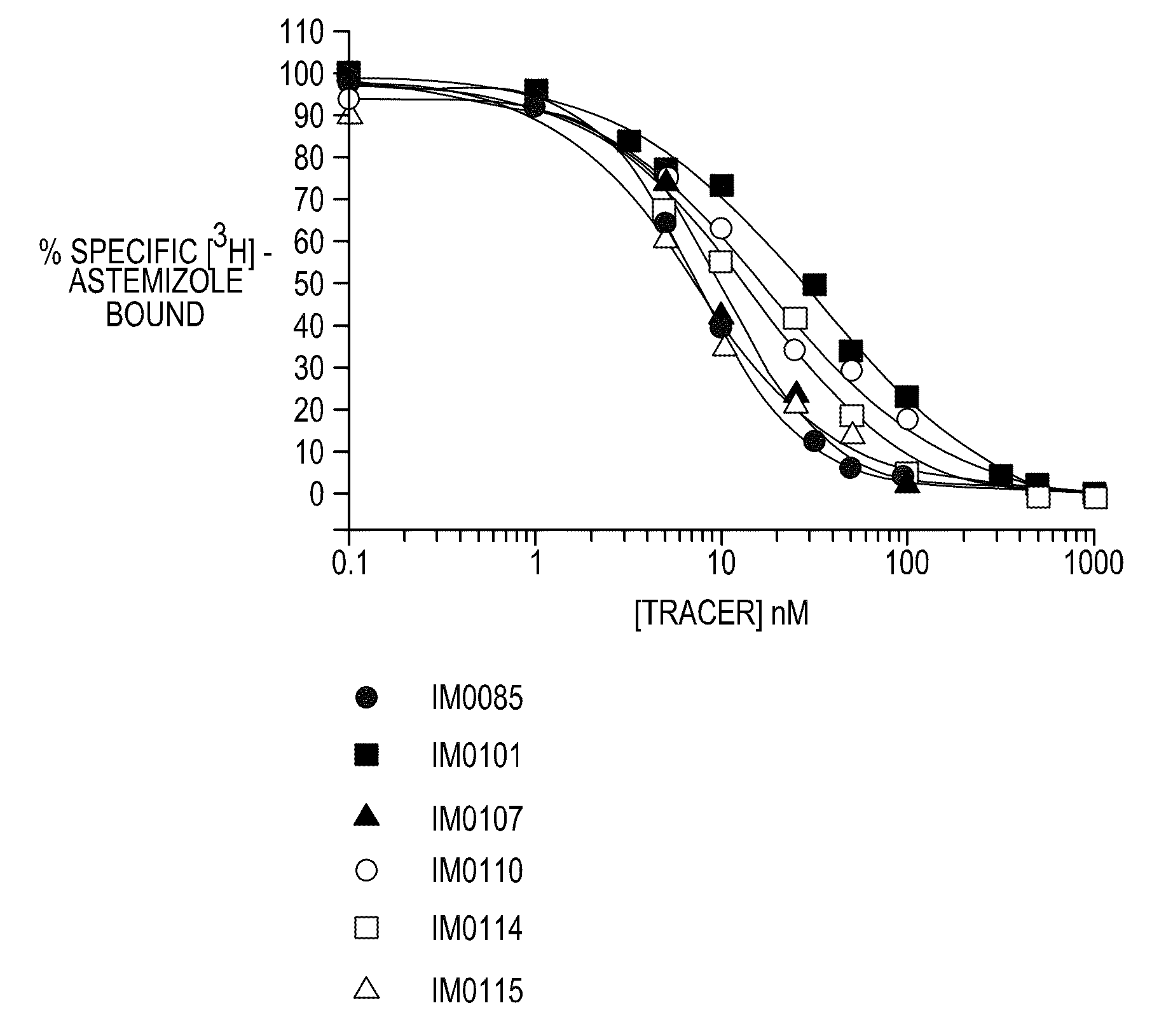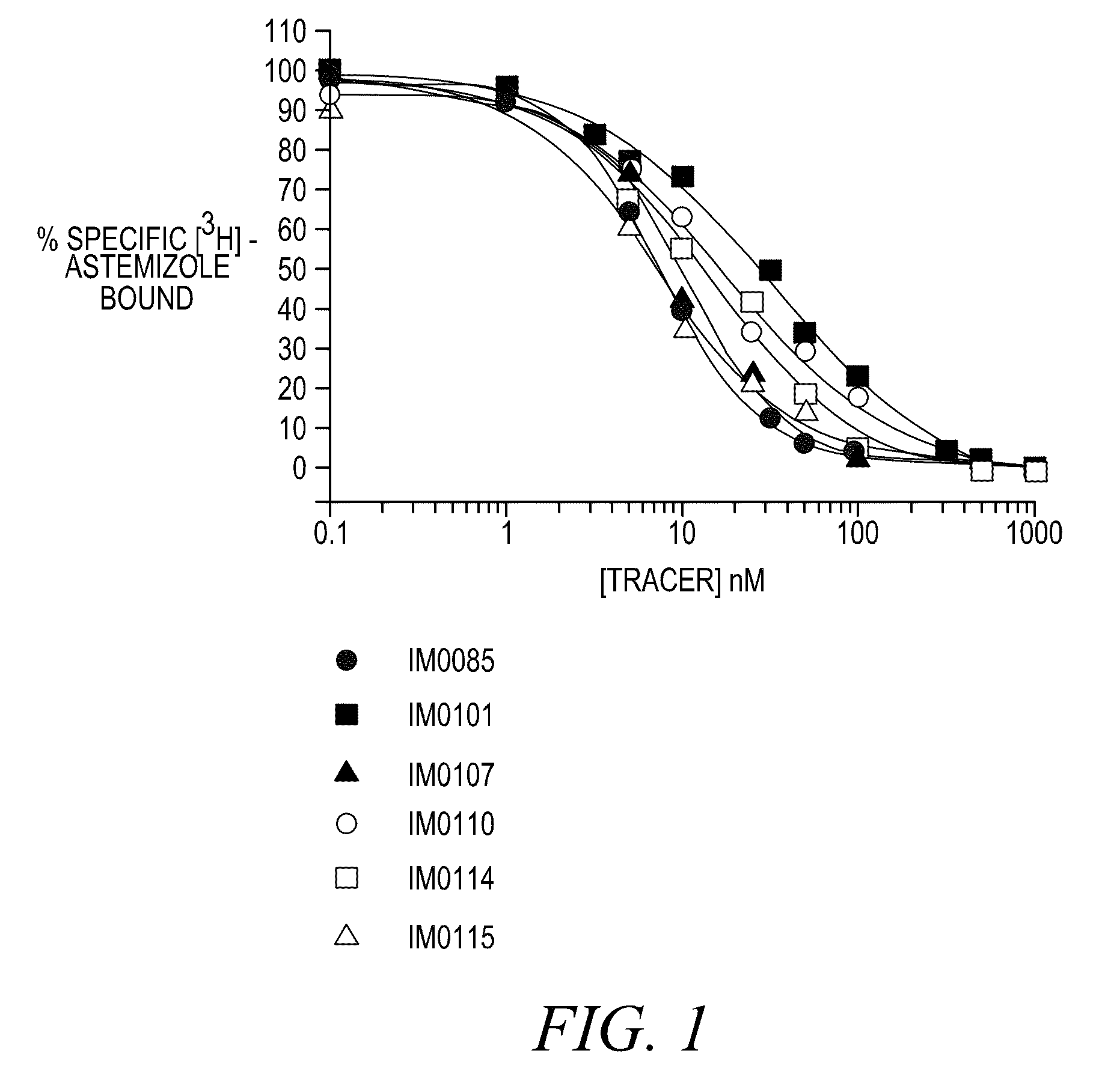FLUORESCENCE POLARIZATION hERG ASSAY
a fluorescence polarization and assay technology, applied in the field of cardiac safety assays, can solve the problems of specialized operators, live cells, difficult automation, etc., and achieve the effect of simple operation and increased herg k+ channel expression levels
- Summary
- Abstract
- Description
- Claims
- Application Information
AI Technical Summary
Benefits of technology
Problems solved by technology
Method used
Image
Examples
examples
Chemical Syntheses
Preparation of Linker (4)
[0259]
2,2′-Oxybis(ethane-2,1-diyl) dimethanesulfonate (2)
[0260]
[0261]Diethylene glycol (1, 5.0 mL, 53 mmol) and triethylamine (Et3N, 16.2 mL, 116 mmol) were dissolved in 40 mL of dichloromethane in a 100 mL 3-neck round bottom flask equipped with a 10 mL addition funnel, a thermometer, an argon inlet, and a magnetic stir bar. The solution was cooled to 0-5° C. in an ice bath. Methanesulfonyl chloride (MsCl, 8.4 mL, 108 mmol) was added dropwise, via the addition funnel, at a rate so as to keep the reaction solution below 15° C. The ice bath was removed and the reaction was stirred at ambient temperature overnight (˜16 hours). Water (25 mL) was added and the mixture was stirred until the solids dissolved. The layers were separated and the organic (lower) layer was washed successively with two 20 mL portions of ice cold 3M hydrochloric acid, 25 mL of 5% aqueous sodium carbonate, and 25 mL of saturated aqueous sodium chloride. The organic phase...
PUM
| Property | Measurement | Unit |
|---|---|---|
| pH | aaaaa | aaaaa |
| hERG current | aaaaa | aaaaa |
| fluorescent | aaaaa | aaaaa |
Abstract
Description
Claims
Application Information
 Login to View More
Login to View More - R&D
- Intellectual Property
- Life Sciences
- Materials
- Tech Scout
- Unparalleled Data Quality
- Higher Quality Content
- 60% Fewer Hallucinations
Browse by: Latest US Patents, China's latest patents, Technical Efficacy Thesaurus, Application Domain, Technology Topic, Popular Technical Reports.
© 2025 PatSnap. All rights reserved.Legal|Privacy policy|Modern Slavery Act Transparency Statement|Sitemap|About US| Contact US: help@patsnap.com



